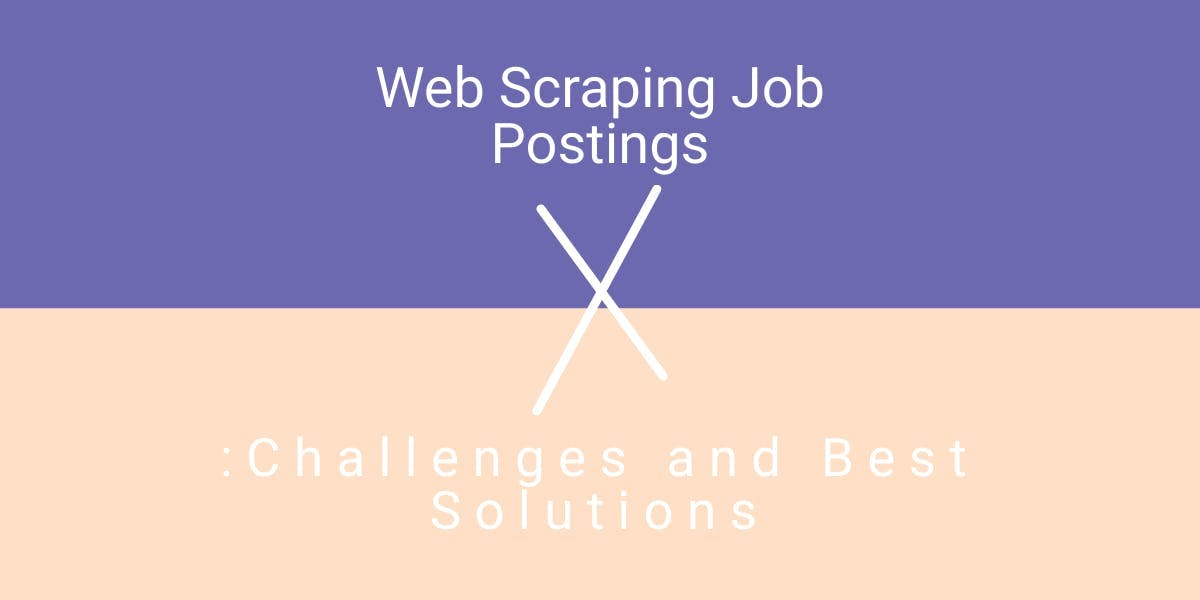Web Scraping Job Postings: Challenges and Best Solutions
Flipnode on May 30 2023

When it comes to web crawling, job data stands out as one of the most highly sought-after pieces of information. This demand is understandable given the increasing number of employment listings. In 2019, according to Statista, the monthly figures for job openings ranged from 6.88 to 7.05 million. With approximately 73% of job seekers actively or passively searching for employment, the demand for job search data is consistently high.
There are numerous ways in which websites and companies can utilize job postings data, including:
- Providing relevant data to job search aggregation sites.
- Analyzing job trends to enhance recruitment strategies.
- Comparing competitor information, among other applications.
In light of recent global events, job postings data has become even more valuable. The COVID-19 pandemic caused a significant surge in unemployment rates, soaring from an average of 3.5% to 14.7%. Consequently, the number of job searches has increased significantly.
Now, the question arises: Where should one begin with job scraping? Regardless of how job search aggregation data will be used, the process of gathering data necessitates scraping solutions. In this blog post, we will explore the starting points and identify the most effective solutions for job scraping.
Web scraping job sites: the challenges
Collecting job data, like any form of data, presents its own set of challenges. The first and foremost decision is to determine which job aggregator sites to scrape. For comprehensive data analysis, it is advisable to consider multiple sites.
Scraping job postings from websites can be particularly challenging. Many of these sites employ anti-scraping techniques, leading to quick blocking and blacklisting of proxies. Websites are continuously improving their ability to prevent automated activity. However, data collectors are also becoming more adept at concealing their scraping activities.
It is important to note that there are ethical ways to mitigate the risk of proxy blocking and adhere to website regulations while web scraping job sites. Ensuring proper web scraping practices is crucial when gathering job data.
However, the main challenge in scraping job postings arises when deciding how to obtain the data. There are several options to consider:
- Building and setting up a job crawler and/or in-house web scraping infrastructure.
- Investing in job scraping tools.
- Purchasing job aggregation site databases.
Each option has its own advantages and disadvantages. Building and setting up a job crawler can be costly, especially without a dedicated development and data analysis team. However, it offers independence from relying on third parties for data acquisition.
Buying a pre-built scraper reduces costs associated with development and maintenance but introduces reliance on external providers for performance.
Another relatively straightforward approach is to purchase pre-scraped databases from data companies specializing in job scraping services. However, to ensure up-to-date data, frequent data purchases are necessary as job openings constantly change and increase.
While the last two options require less explanation, let's delve into the first option, building and setting up a job crawler, in greater detail.
Job posting scraping: building your own infrastructure
If you opt to build and establish your own job scraping tool, there are several important steps to consider:
- Analyze popular languages, APIs, frameworks, and libraries: Research and identify the widely used and popular technologies in web scraping. This knowledge will save you time when making future development changes.
- Create a stable testing environment: Building a job crawler comes with its own set of challenges, so it's crucial to establish a reliable testing environment. Having a simplified version of the crawler allows for decision-making from a business perspective rather than directly in production.
- Address data storage concerns: As you collect job data, storage requirements will become a consideration. Invest in sufficient storage centers and explore space-saving methods to effectively manage and store the accumulated data.
These are the key guidelines to keep in mind. Developing your own web crawler is a significant commitment in terms of both finances and time.
Once you have laid the foundation for your web crawler, the next step is to determine the best proxies to fuel its operations.
Job scraping with proxies
Job scraping with proxies is an essential strategy employed by data-driven businesses to overcome challenges in web data collection. Proxies serve as intermediaries between your scraping tool and the target job websites, acting as a shield to protect your IP address and ensure smooth and uninterrupted data extraction. By utilizing proxies, you can bypass anti-scraping measures implemented by websites and mitigate the risk of getting blocked or banned.
In addition to anonymity, proxies enable the distribution of scraping requests across multiple IP addresses. By rotating IP addresses, you can emulate natural browsing behavior, avoiding rate limits and protective measures set by websites. This ensures a consistent and reliable extraction of job data, without arousing suspicion or triggering security mechanisms.
Furthermore, proxies provide the flexibility of geo-targeting, allowing you to access job websites from different locations. This feature proves invaluable when gathering job data from specific regions or countries, providing insights into localized job markets. By utilizing proxies located in the target region, you can scrape region-specific job postings and gain a comprehensive understanding of the local employment landscape.
Conclusion
If you opt to purchase a ready-made database or invest in a third-party web scraper for job postings, you can save valuable time and resources on development and upkeep. However, there are advantages to having your own infrastructure. When properly executed, it can be cost-effective and provide a reliable system you can depend on.
Selecting the appropriate fuel for your web crawler is the next crucial step. It is essential to choose a reputable provider with extensive market expertise to ensure optimal performance and results.



